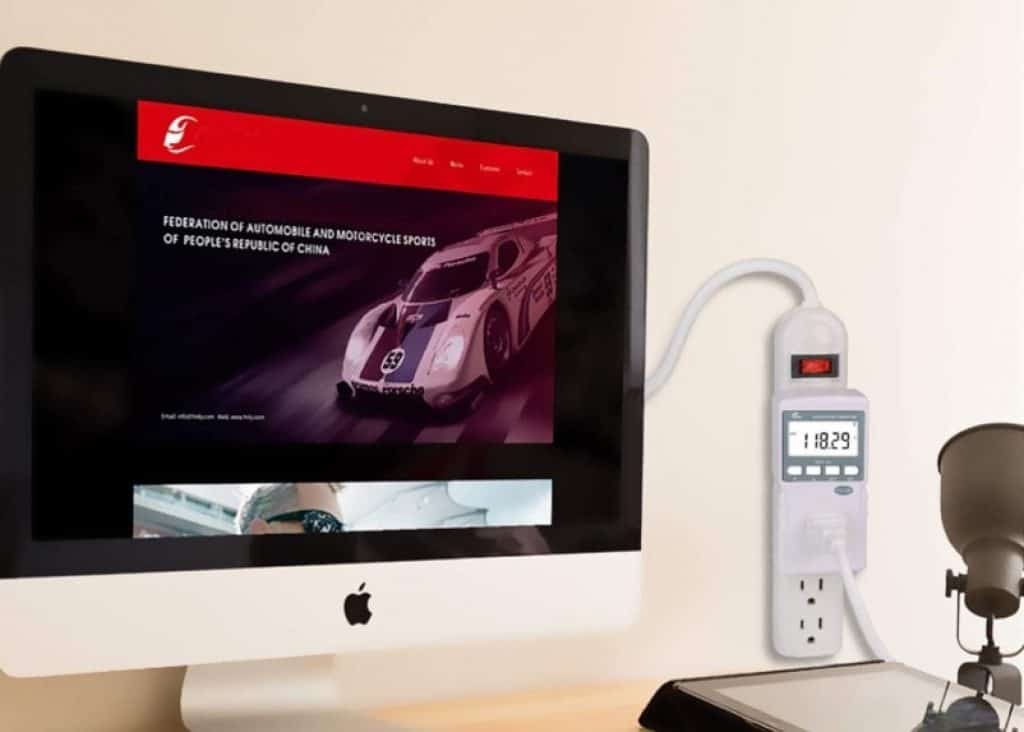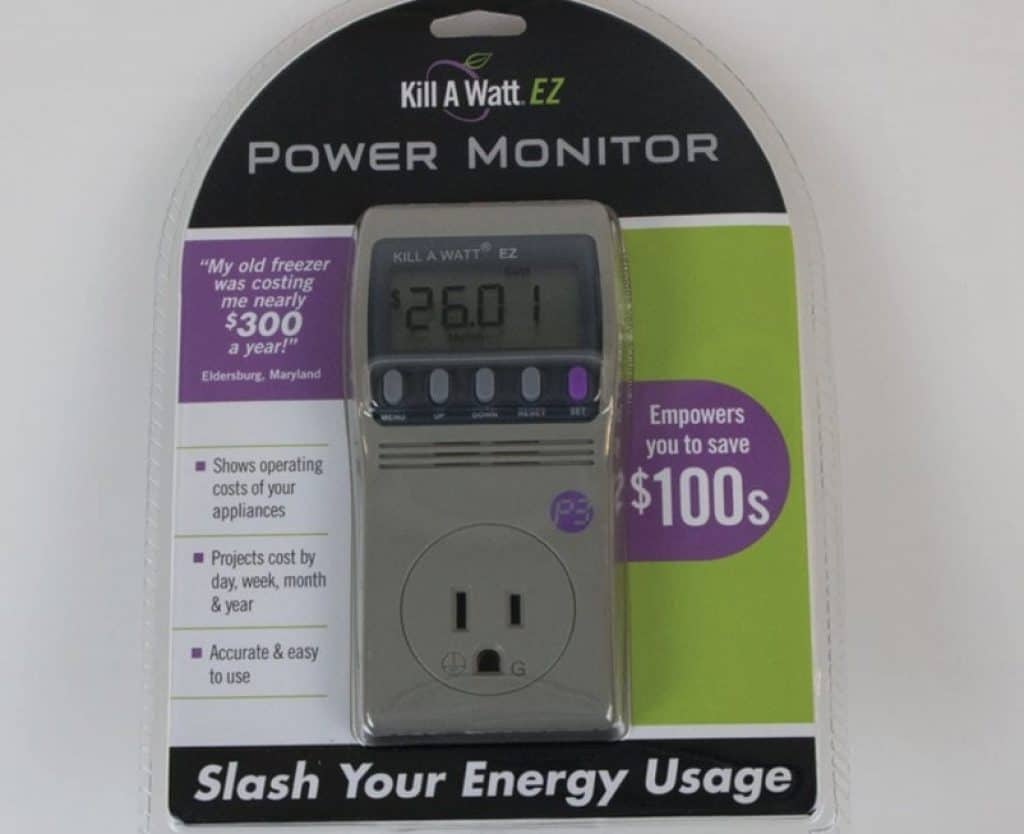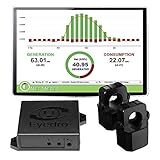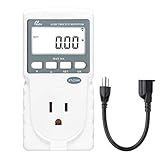Best Electricity Usage Monitors for Home Maintenance in 2024
Maintaining your house electricity supply is an essential part of convenient and efficient power distribution. While some people prefer the old-school manual check, some devices can facilitate the process, bringing you comfortability and functionality. Finding the best electricity usage monitor online is as demanding as it may be confusing.
Today, let’s take a look at some top-notch options for monitoring your house power usage. You may want to consider your house wiring, power input, and other features to pick the right one. Also, mind the guide down below to expand your expertise on the subject.
Good-quality monitors always come with more than one function to be used for power maintenance. While the overall capacity and size can vary drastically, the core features and usages should be round-the-clock active, have decent sensors, and, preferably, be synchronizable with other in-house appliances. Also, make sure to take into account the set-up requirements, as well as wiring and software they use.
Contents
- 1 Top 7 Best Electricity Usage Monitor Reviews
- 1.1 1. Emporia Energy Gen 2 Smart Home Energy Monitor — Best Home Energy Monitor Overall
- 1.2 2. P3 International P4460 Electricity Usage Monitor — Best Plug-In Power Meter
- 1.3 3. Poniie PN2000 Plug-In Electricity Usage Monitor — Heavy-Duty Power Usage Meter
- 1.4 4. Eyedro Home Solar & Energy Monitor — Power Usage Monitor for Full-Blown Analysis
- 1.5 5. Sense Real-Time Energy Usage Monitor — Electric Usage Meter for Safety
- 1.6 6. Gosund Mini WiFi Smart Plug With Remote Control — Alternative for Monitoring Electrical Consumption
- 1.7 7. Gen1 Emporia Energy Smart — Great Electricity Usage Monitor for Small Households
- 2 Power Usage Monitors: Basics and Tips
- 3 FAQs
- 4 Though Electricity Runs the House, You Don’t Have to Run Out of Money
Top 7 Best Electricity Usage Monitor Reviews
Among the devices monitoring electric consumption that I’ve seen in action before, there are different options. Some of them are rather compatible with WiFi, while others require a wired Internet connection. Nonetheless, consider their pros and cons and choose wisely.
- Emporia Energy Gen 2
- P3 International P4460
- Poniie PN2000
- Eyedro Home Solar
- Sense Real-Time Energy
- Gosund Mini WiFi Smart Plug
- Gen1 Emporia Energy Smart
1. Emporia Energy Gen 2 Smart Home Energy Monitor — Best Home Energy Monitor Overall
Specifications:
- Item Weight: 2.9 pounds
- Package Dimensions: 9.13 x 5.08 x 4.8 inches
- Style: Monitor with 8 50A Sensors
- Warranty: 1-YEAR
- Connectivity Protocol: Wi-Fi
I choose this product as my primary pick because it combines the two main features a monitor needs to have, i.e., compatibility and resilience. Packed into a handy smartphone app, the device is a handy appliance that allows you to watch over your energy consumption wherever you are. Also, it’s made for the property of any size, making it resistant to power surges and blackouts.
With the size of no longer than 8.5 inches, the appliance weighs around 3 pounds, which is perfect for installation anywhere inside the house. Use ‘Smart meters: a guide’ provided with the appliance to set up the device. There are special clips with in-built sensors, which are connected to the power output wiring. Though the process is rather straightforward, you shouldn’t disassemble the box as it can be difficult to put it back together.
What’s included:
- DIY instructions
Easily paired with in-house WiFi, the device provides a full-blown examination of your power supply, taking in up to 50A overall. The check is so tenacious that the app that comes with the appliance displays every bit of a probable power leak. With real-time information, you can assess your monthly power consumption to prevent overuse.
- Highly functional;
- Accurate measurements;
- Comes with an app;
- Connects to WiFi.
- Plugs are sold separately.
2. P3 International P4460 Electricity Usage Monitor — Best Plug-In Power Meter
Specifications:
- Operating Voltage: 115VAC
- MAX Voltage: 125 VAC
- Max Current: 15A
- Max Power: 1875 VA
- Dimensions: 5 1/2″H x 2 1/2″W x 1 1/2″D
Compactly packed into a minute appliance, this best power monitor is perfect for regular power usage screening. It’s used to measure a variety of medium-sized home comforts to check their power input and consumption rate.
Along with the measurements, it calculated the exact expense rate within the parameters you designated while adjusting the device. Operating with a voltage of 115 units, the appliance can withstand up to 1900 VA, which is normally the rate expected of heavy-duty meters.

It weighs only 5 ounces and is easily plugged into a regular 120-V outlet. The LED display has 8 major measurement units to conduct a complete examination of your power consumption.
What’s included:
- Usage monitor
Also, the panel is made non-reflective to be easily read from any angle without having to come too close to the device. Designed for multiple uses, this power usage meter doesn’t mind constant current input changes, which results in longevity.
- Easy to use;
- No installation is needed;
- Durable;
- Pricing calculation feature.
- Using near to the max rated specs isn’t recommended.
3. Poniie PN2000 Plug-In Electricity Usage Monitor — Heavy-Duty Power Usage Meter
Specifications:
- Input Power: 110-125V 60Hz/220-240V 50Hz.
- Maximum Current: 16A
- Maximum Power: 1800W (@120V)
- Resolution: 0.01W, 0.001A, 0.01V
- Warranty: 1-YEAR
If you have a problem deciding which of your house appliances consumes the most power, here is a solution for you. The device gets the second place simply because it’s single-use only, but it has a variety of reliable perks. Not only can it showcase what comfort is the most whimsy, but it also works as a power-surge blocker.
The overall Amp capacity amounts to 16 units, which is an impressive mark for an appliance of this size. It can take 1800 Watts, so it can be used both for a small-sized microwave and a large fridge. As it goes with plug-in power meter devices, it determines the current power input in V, W, and A, having the measurement error close to 1.5%.
What’s included:
- 14 AWG Extension Cord
Should there be an overload probability, the display will show you a corresponding pictogram to prevent it. Since the body is made of heat-resistant propylenes, it doesn’t overheat, and neither does it break down when the input is too high. It’s perfectly safe and suits both indoor and outdoor appliances.
- Portable;
- Easy to use;
- High input range;
- Auto light-off function.
- Measures one appliance at a time.
4. Eyedro Home Solar & Energy Monitor — Power Usage Monitor for Full-Blown Analysis
Specifications:
- Connectivity Protocol: 2.4 GHz WiFi
- Style: WIFI (EYEFI-2)
- Power Source: AC
- Amperage Capacity: 200 Amps
- Plug Format: 120V, Type A- US style (Default). Contact us for European and other options.
In case you need complete control over your power consumption, you will find this device most useful. Combining an electric usage meter, power analyst, and cost estimator, you get a full, premium package of services with one device. While it may seem a little perplexing at first, the product is extremely easy to use.
The installation can take you a good half an hour, but it’s not that difficult if you follow the instructions. After setting up, the device gives you full access to your in-house and solar power monitoring. It can be customized by putting your billing rate, preferred units of measurement, as well as the assumed minimum and maximum power usage.
What’s included:
- Module 2 Sensors and a North American Power Adapter
With constant updates, the software is always up-to-date to follow your monthly and yearly expenses. Also, since the sensors have enhanced accuracy, they display even the slightest changes in current, preventing system overloads. Don’t forget to use WiFi to have real-time updates on your power usage status.
- 3-mode functionality;
- No subscription;
- Lightweight;
- Does save money.
- May require contacting the support while installing.
5. Sense Real-Time Energy Usage Monitor — Electric Usage Meter for Safety
Specifications:
- Compatible with: Homes without solar systems;
- Wireless Specifications: 802.11 b/g/n 2.4 GHz WiFi – Bandwidth Use: ~300 MB/day;
- Relative Humidity: < 90%; IPX0 rating, no water ingress;
- Temperature: 32-154ºF (0-68ºC);
- Elevation: < 6562′ (2,000m)
If you’re concerned with your electrical appliance safety and you want to keep an eye on your current, Sense Monitor can give you that. The system is ETL-approved to be reliable and notify you about any anomalies happening within the system reach range. It synchronizes well with smartphones and tablets and doesn’t need to be plugged into Ethernet.
You can install the monitor by yourself, and it takes less than half an hour to adjust the settings. Unlike the previous-model home energy monitor systems, Monitor 12000 has an increased number of sensors located in the body. While the monitor reads the indexes, it has a very small error chance, coming to only 2%, which is perfect for small and medium-sized households.

What’s included:
- Sense monitor
Besides the regular power consumption tracking, the system operates as an estimator to provide you with the most accurate money expense calculations. When an appliance is on, it’s detected by the system to give you a better overview of what comforts consume the most power.
- Interactive display;
- In-built safety alarms;
- Automatic power system maintenance;
- Low error chance.
- Takes time to identify some comforts.
6. Gosund Mini WiFi Smart Plug With Remote Control — Alternative for Monitoring Electrical Consumption
No products found.
Specifications:
- Compatible Devices: Amazon Alexa , Google Assistant
- Connectivity Technology: Wi-Fi
- Current Rating: 10.0 amps
- Input Voltage: 120 volts
- Material: Polycarbonate
Well-synchronizable with WiFi and smart house systems, the plug gives you full control over your appliances. It proves useful to reduce power usage in case of accidentally leaving the lights or TV on. Though it requires an Internet connection, your control range isn’t limited only to your house but can be easily manipulated at a distance.
The device is designed to suit 2.4GHz networks. It also determines the power the appliance can withstand, which comes to 10A. While setting up is completely absent, it’s necessary to pair the outlets with your smartphone or tablet to receive full access to the functions. For instance, you can easily schedule your nightstand lamp to go off before night time and then turn back on in the morning.
What’s included:
- Mini smart plug 1 pack,Instructions
By creating a family sharing, your whole family can also be in charge of maintaining and regulating power consumption. Make sure to use voice control when connected to Alexa to make it even easier to utilize when needed.
- Comes in packs of 4;
- No installation;
- Completely remote-controlled;
- Scheduling function.
- No power usage analysis.
7. Gen1 Emporia Energy Smart — Great Electricity Usage Monitor for Small Households
Specifications:
- Support: 3 phase systems less than 600A with additional 200A clamp
- Product Dimensions: 3.5 x 1.25 x 2.25 inches
- Power: the Vue directly from a 15A or 20A breaker
- Energy data: requires 2.4 GHz WIFI with an Internet
- Standards Compliant: FCC, ETL
Despite being a Gen 1 Emporia product, this device has still got its perks, especially for small-sized households. It’s more compact and acts more locally than the company’s next-generation monitor, which gives limited yet more precise measurements. On the other hand, it has all the same functions as Gen 2.
The appliance has 8 highly sensitive sensors with 50A each that receive data directly from the circuits. The indexes are rather accurate to track your house power usage, but you should still know how to calculate wattage.
What’s included:
- emporia Vue Energy Monitor with Expansion Module
Displayed on the official manufacturer’s app, the data gives a detailed forecast on your current electricity and solar power leaks to see which comfort to get rid of. If you combine your billing details with this power usage monitor, you will see the approximate monthly/yearly payments for in-house power usage.
- Compact and neat;
- Billing calculations;
- Easy to install;
- Works with multiple devices.
- Limited coverage.
Power Usage Monitors: Basics and Tips
Having a variety of good-quality options is one thing, but choosing the best home energy monitor for your household is something different. It’s essential to be wary of at least the basic characteristics that a device may offer. Besides, each appliance has its specs that determine its operation.
These and many other factors are vital for picking a product that will serve you well for long enough. Let’s take a better look at these and some other things to consider before purchasing a monitor.
What are the electricity usage monitors?
E-monitors are appliances designed to perform the functions of standard electricity meters, i.e. collecting data about household power usage. While the standard utilities provide you only with indexes, e-monitors have a range of useful functions that come in handy.
Such may include power usage monitoring, data analysis, cost and pricing estimation, or even remote power source control. A device to measure electricity usage indoors is a helpful way of managing your electricity consumption properly since it can assist in forecasting expenses, as well as prevent power leaks and overloads.

How do electricity monitors work?
Connected to your house’s power circuits, the appliance synchronizes with the current flow and reads data from it. Since most of the monitors are automated, it normally takes around 3 seconds for the data to reach the display (or app). Using different measurement units, the data may be showcased in Volts, Watts, Amps, etc.
While a regular power energy consumption monitor designates only the energy used, modern devices can often compare the current power usage to the preferred one. Also, they can calculate and estimate the approximate pricing for monthly power billing. This is usually backed up by overload notifications and alarms to prevent power leaks and blackouts.
What to consider when choosing an electricity usage monitor?

Price
Good-quality meters don’t, of course, cost a little penny. Because efficient functions require efficient technology, the price of a meter can range from 150$ to 1000$. Here, you have to mind the specifics and decide what exactly you want from your monitor.
Normally, a 150$-200$ device can be a match for a small or medium-sized household where power consumption isn’t too grand. Other, more expensive models can have features that you won’t use at all, hence additional expenses. Don’t look for the cheapest one but consider paying extra to obtain a good product.
Brand and reviews
Again, there are quite a few reliable manufacturers with an array of products. I cannot speak for all of them, but Emporia, Poniie, and Eyedro have been seen in action. If you’re opting between some of them, try reading home energy monitor reviews to see what previous customers think of your yet-to-be appliance.
Size and quality
Long gone are the days when a meter was hefty and bulky. Modern devices don’t normally exceed the size of a smartphone. Though additional equipment may take up some space, the sensors should be minute and neat. Also, pay attention to the material. You want your meter to be made of sturdy polymers to prevent overloads.
Ease of use and connectivity
You don’t have to be an electrician to install a monitor. Normally, it takes less than half an hour to connect the device to your power circuits (with the power off, of course). Just follow the instruction booklet to have a complete understanding of the process.
Consumption measurement
To have a vast scope of functions, manufacturers enable their meter to display measurements in different units, like Volts, Watts, Amps, etc. This makes the appliance highly versatile as it monitors all the aspects of the power circulation. Make sure to be aware of the units since they provide you with power overload notifications to prevent blackouts.
FAQs
Should you have more questions on how to measure electricity usage with a meter, take a look here.
How can I track my daily electricity usage?
Using a power usage monitor displays all your current and future electricity usage, calculating the gradual usage rate. By keeping the record of all the indexes manually or with an app, you can deduce your daily usage.
How do electricity monitors work?
They read your power circuit indexes and provide you with the voltage, wattage, and other parameters. If designated, the monitor analyzes your power usage and predicts monthly electricity consumption. Also, it can show you the exact billing expenses at this rate.
What uses the most electricity in the house?
Most of the time, the fridge is to blame. It has a very energy-consuming cooling mechanism that requires many cycles to maintain the temperature. Besides it, the power can be drained from the TV and even a phone charger. Use the meter to detect your power leaks accurately.
Though Electricity Runs the House, You Don’t Have to Run Out of Money
Having a monitor in your house is not a luxury but rather a necessity these days. Not only does it help you keep track of your energy consumption, but it also prevents emergencies and overloads. Pick a hi-tech monitor to maintain your expenses or choose a simple plug-in meter to find the power leak source. Whatever you choose, it will prove most useful in the long run.
Hopefully, you’ve found the article helpful. Now, tell me what you think about monitors? Have you used them before? For what purpose? Leave your comment below!
“A good tool stays with you for many years and choosing carefully ensures the job is done right, your work is neat, and the tool is always a pleasure to use”











